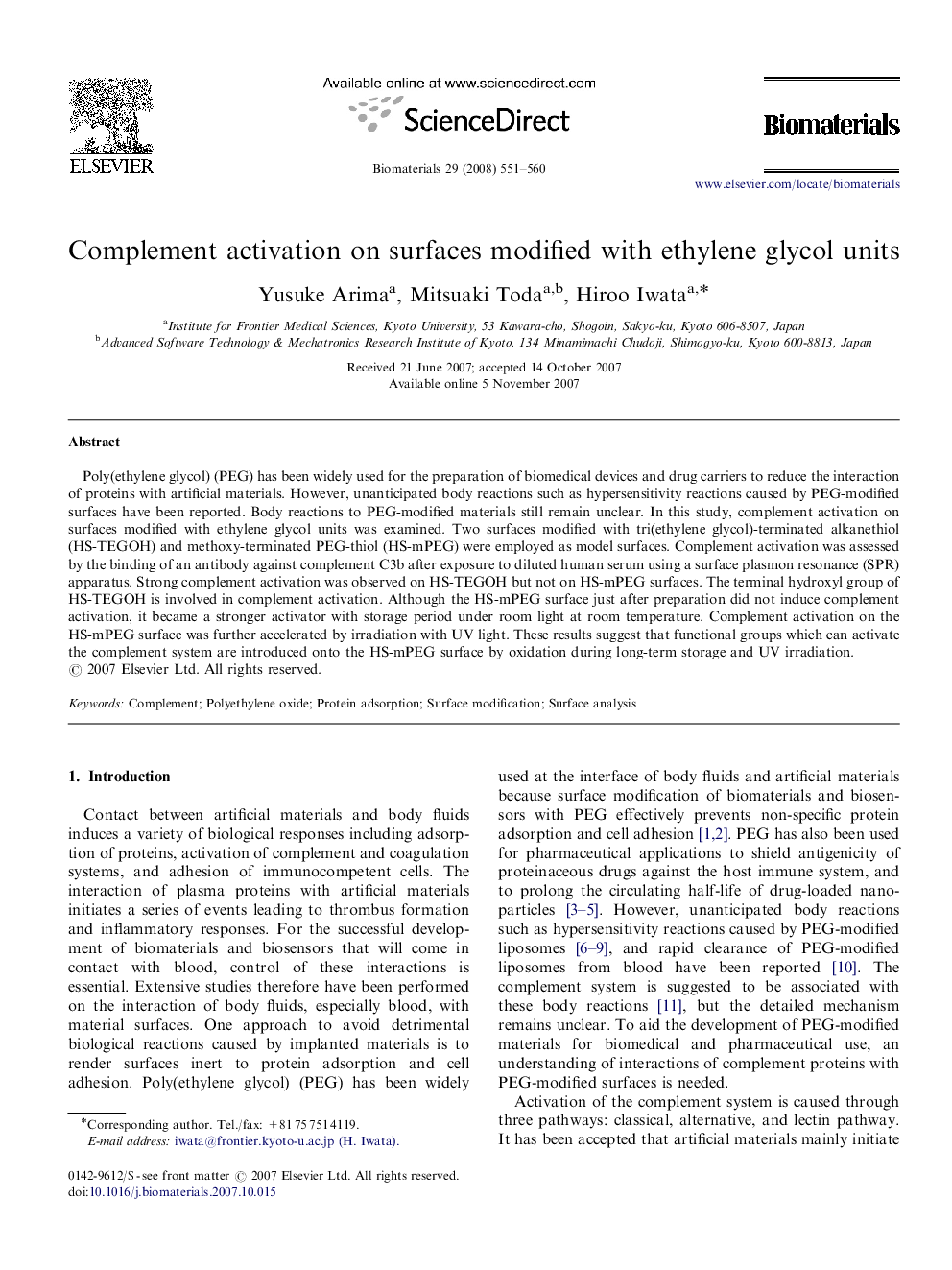| کد مقاله | کد نشریه | سال انتشار | مقاله انگلیسی | نسخه تمام متن |
|---|---|---|---|---|
| 10040 | 660 | 2008 | 10 صفحه PDF | دانلود رایگان |

Poly(ethylene glycol) (PEG) has been widely used for the preparation of biomedical devices and drug carriers to reduce the interaction of proteins with artificial materials. However, unanticipated body reactions such as hypersensitivity reactions caused by PEG-modified surfaces have been reported. Body reactions to PEG-modified materials still remain unclear. In this study, complement activation on surfaces modified with ethylene glycol units was examined. Two surfaces modified with tri(ethylene glycol)-terminated alkanethiol (HS-TEGOH) and methoxy-terminated PEG-thiol (HS-mPEG) were employed as model surfaces. Complement activation was assessed by the binding of an antibody against complement C3b after exposure to diluted human serum using a surface plasmon resonance (SPR) apparatus. Strong complement activation was observed on HS-TEGOH but not on HS-mPEG surfaces. The terminal hydroxyl group of HS-TEGOH is involved in complement activation. Although the HS-mPEG surface just after preparation did not induce complement activation, it became a stronger activator with storage period under room light at room temperature. Complement activation on the HS-mPEG surface was further accelerated by irradiation with UV light. These results suggest that functional groups which can activate the complement system are introduced onto the HS-mPEG surface by oxidation during long-term storage and UV irradiation.
Journal: Biomaterials - Volume 29, Issue 5, February 2008, Pages 551–560